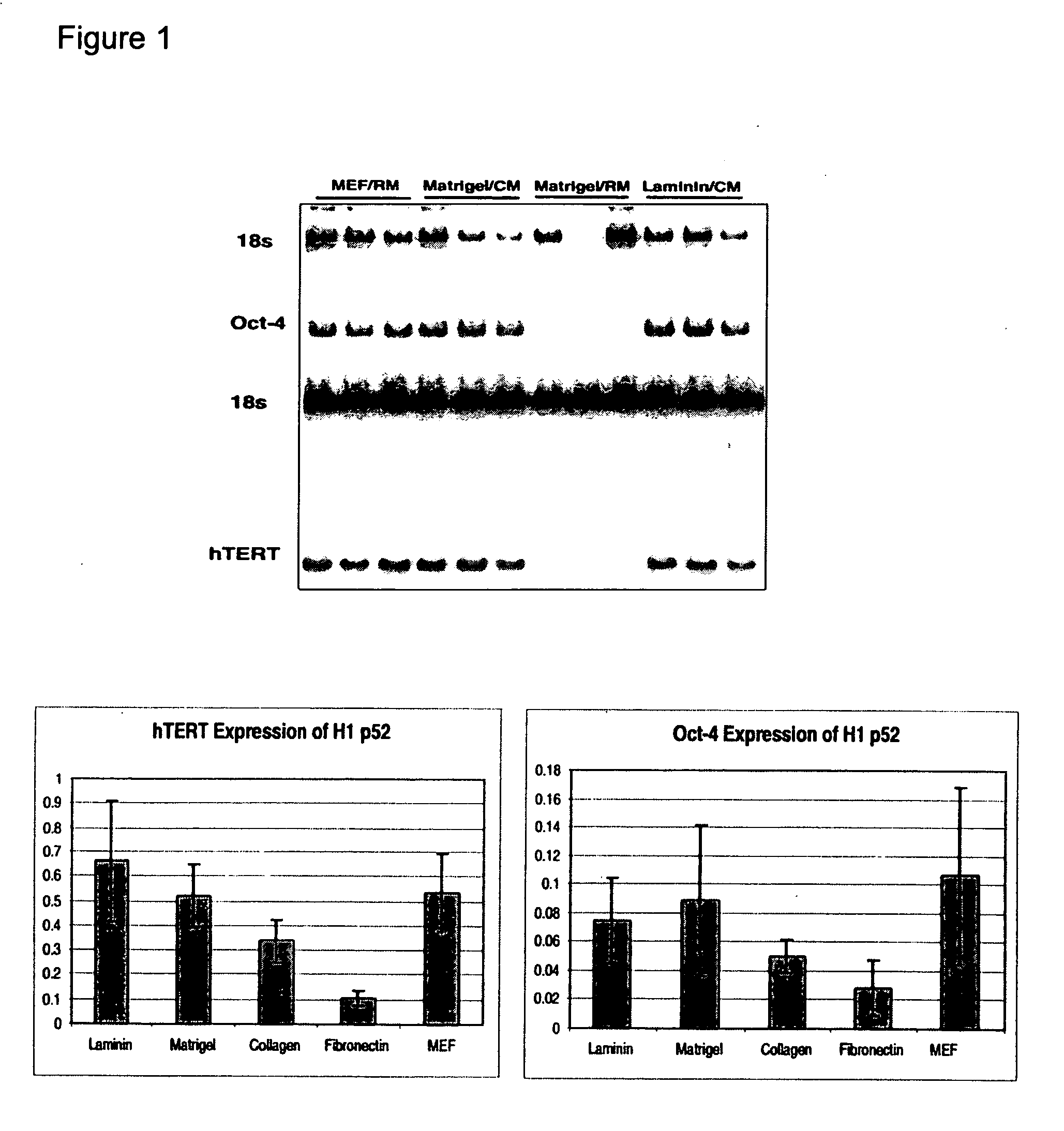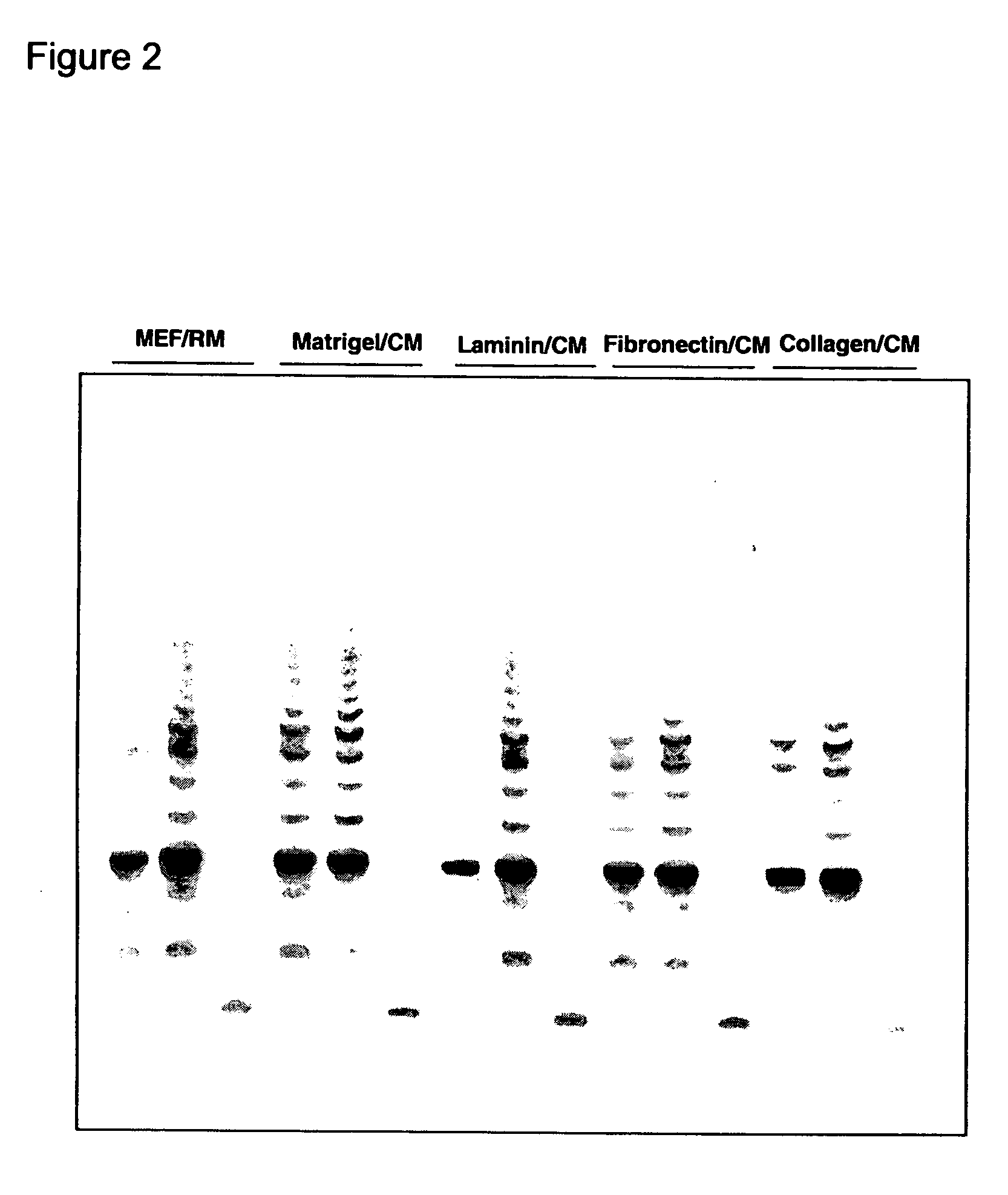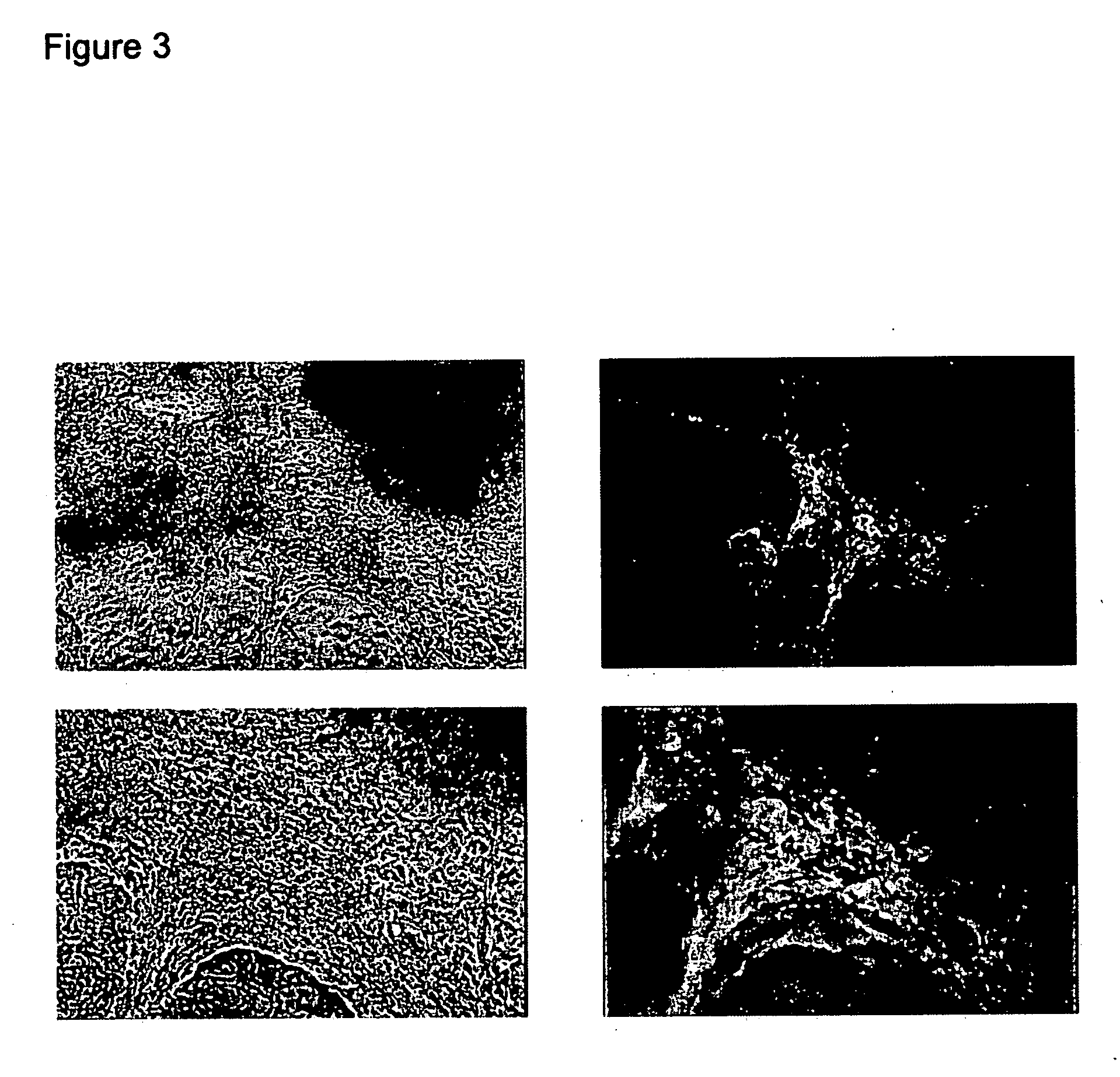Differentiated cells suitable for human therapy
- Summary
- Abstract
- Description
- Claims
- Application Information
AI Technical Summary
Benefits of technology
Problems solved by technology
Method used
Image
Examples
example 1
Feeder-Free Passage of hES Cells
[0155] In this experiment, undifferentiated hES cells that had been maintained on primary mouse embryonic feeder cells were harvested, and then maintained in the absence of feeders. The culture wells were coated with Matrigel®, and the cells were cultured in the presence of conditioned nutrient medium obtained from a culture of irradiated primary fibroblasts.
Preparation of Conditioned Media (CM) from Primary Mouse Embryonic Fibroblasts (mEF):
[0156] Fibroblasts were harvested from T150 flasks by washing one time with Ca++ / Mg++ free PBS and incubating in 1.5-2 mL trypsin / EDTA (Gibco) for about 5 min. After the fibroblasts detached from the flask, they were collected in mEF media (DMEM+10% FBS). The cells were irradiated at 4000 rad (508 sec at 140 kV: shelf setting 6 in a Torrex™ generator), counted and seeded at about 55,000 cells cm−2 in mEF media (525,000 cells / well of a 6 well plate). After at least 4 hours the media were exchanged with SR conta...
example 2
Phenotypic Markers of hES Cells in Feeder-Free Culture
[0163] Undifferentiated hES cells express SSEA-4, Tra-1-60, Tra-1-81, OCT-4, and hTERT. The expression of these markers decreases upon differentiation. In order to assess whether the cells maintained in feeder-free conditions retained these markers, cells were evaluated by immunostaining, reverse transcriptase PCR amplification, and assay for telomerase activity.
[0164] For analysis by fluorescence-activated cell sorting (FACS), the hES cells were dissociated in 0.5 mM EDTA in PBS and resuspended to about 5×105 cells in 50 μL diluent containing 0.1% BSA in PBS. For analyzing surface marker expression, cells were incubated in the primary antibodies, including IgG isotype control (0.5 μg / test), IgM isotype control (1:10), SSEA-1 (1:10), SSEA-4 (1:20), Tra-1-60 (1:40) and Tra-1-81 (1:80), diluted in the diluent at 4° C. for 30 min. After washing with the diluent, cells were incubated with rat anti-mouse kappa chain antibodies conju...
example 3
Differentiation of hES Cells
[0172] In this experiment, differentiation using standard methods of aggregate formation was compared with a direct differentiation technique.
[0173] For the aggregate differentiation technique, monolayer cultures of rhesus and human ES lines were harvested by incubating in Collagenase IV for 5-20 min, and the cells were scraped from the plate. The cells were then dissociated and plated in non-adherent cell culture plates in FBS-containing medium. The plates were placed into a 37° C. incubator, and in some instances, a rocker was used to facilitate maintaining aggregates in suspension. After 4-8 days in suspension, aggregate bodies formed and were plated onto a substrate to allow for further differentiation.
[0174] For the direct differentiation technique, suspensions of rhesus and human ES cells were prepared in a similar fashion. The cells were then dissociated by trituration to clusters of ˜50-100 cells, and plated onto glass coverslips treated with p...
PUM
| Property | Measurement | Unit |
|---|---|---|
| Dynamic viscosity | aaaaa | aaaaa |
| Dynamic viscosity | aaaaa | aaaaa |
| Dynamic viscosity | aaaaa | aaaaa |
Abstract
Description
Claims
Application Information
 Login to View More
Login to View More - R&D
- Intellectual Property
- Life Sciences
- Materials
- Tech Scout
- Unparalleled Data Quality
- Higher Quality Content
- 60% Fewer Hallucinations
Browse by: Latest US Patents, China's latest patents, Technical Efficacy Thesaurus, Application Domain, Technology Topic, Popular Technical Reports.
© 2025 PatSnap. All rights reserved.Legal|Privacy policy|Modern Slavery Act Transparency Statement|Sitemap|About US| Contact US: help@patsnap.com



